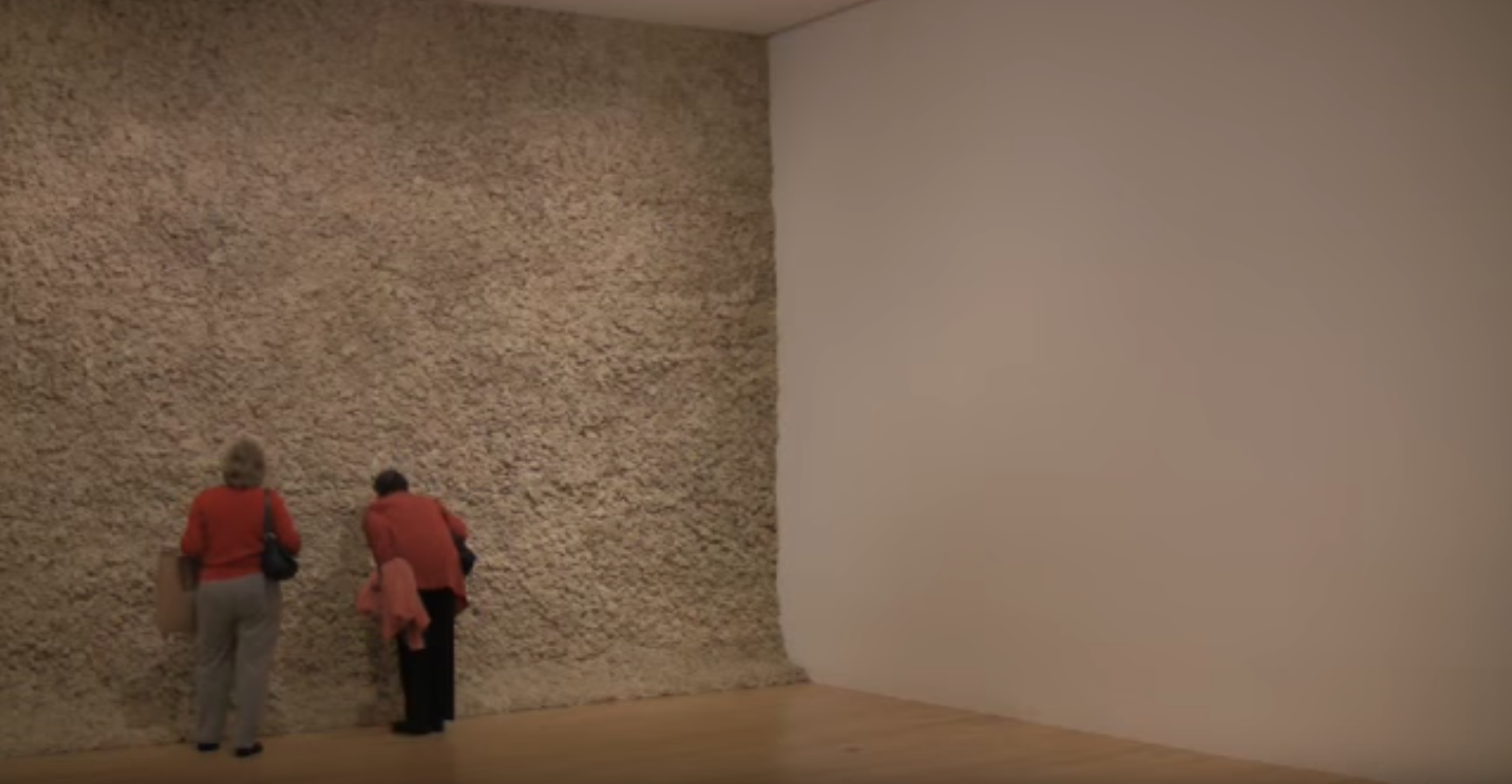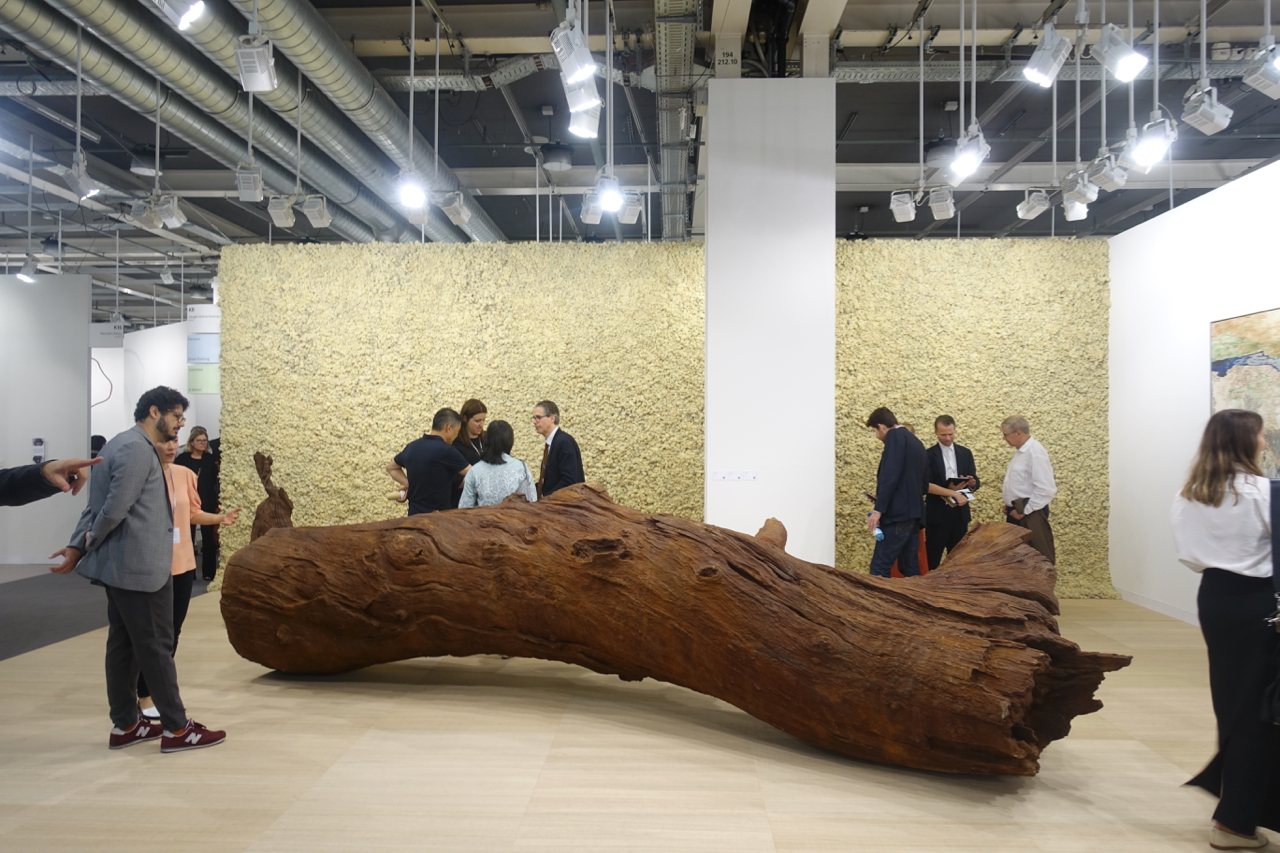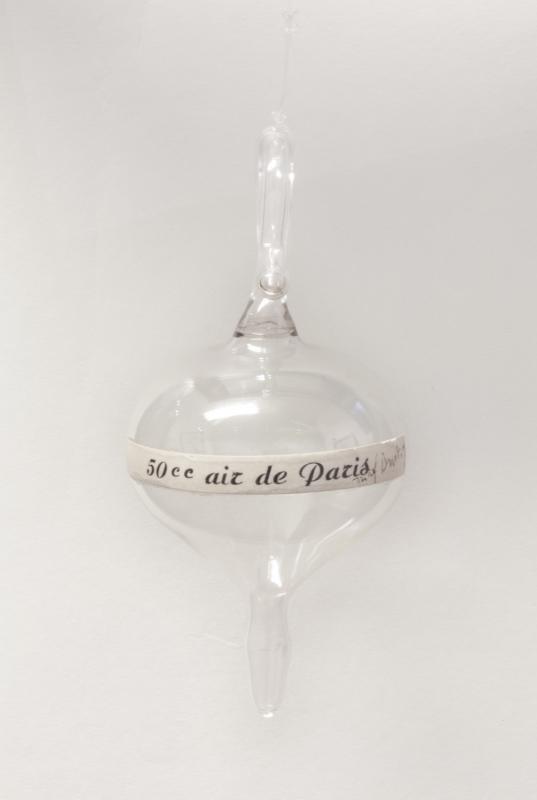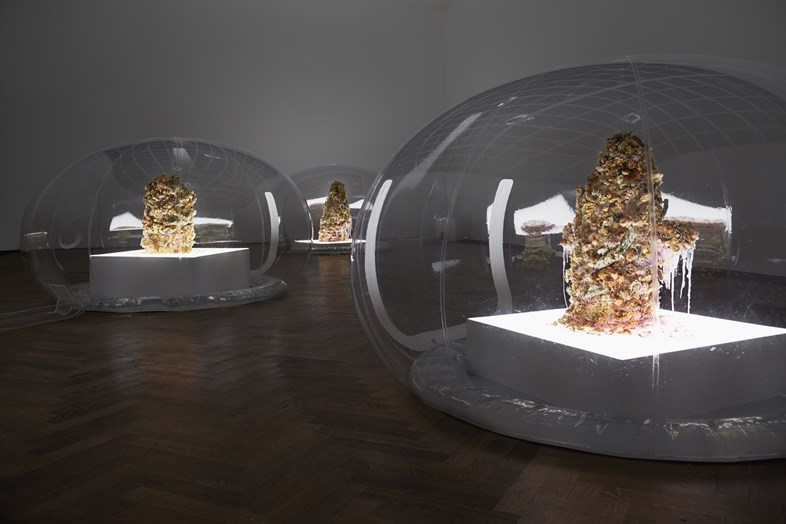Painting is born in a smelly studio. – JIM ELKINS
Tag Archives: artworld
ArtBasel 2018: Wake up and smell the…
Art Basel offers a premier platform for renowned artists and galleries. The 49th edition brings together about 290 galleries from 35 countries and opened earlier this week. In fact, “art is now absolutely a consumer product, and that’s the huge difference. It’s a whole different world”, as Paula Cooper recently noted in the New York Times.  Paula Cooper, 80, whose gallery, opened in New York in 1968 has been pivotal in shaping the art world as we know it today. Yet, Art Basel is more than just a fair in the commercial sense of the word. Surprisingly, an attentive visitor can also encounter art in a multi-sensory way and make a few observations on the state of the sense of smell in contemporary art.
Irritating sensation at Art Basel
A pungent smell surrounds the booth of the well known Berlin based gallery Neugerriemenschneider. It emanates from Olafur Eliasson’s Moss Wall (1994). And please note: As iterated on the artist’s website the residual scent is an intentional component of the work. Thus, it is not an accidental aspect. The Icelandic-Danish artist was 27 years old and just starting to gain recognition in the international art world when working on the 3.5× 10m sized wall. What one sees and smells is Cladonia rangiferina, which is also called reindeer moss, a lichen native to the northern regions. The lichen is woven into a wire mesh and mounted on the wall of the booth as Eliasson points out on his website. Thus, the work brings a natural phenomena into the highly constructed space of an exhibition, where the visitor might notice how nature might be a construction as well. As the lichen dries, it shrinks and fades. However, when the installation is watered, the lichen expands and emits a pungent odor. The gallerist actually told me about spraying water on the lichen.
Moss Wall as major early work
This major work from Eliasson’s early career has previously been shown at the Museum of Modern Art in New York, SFMOMA in San Francisco, and the Moderna Museet in Stockholm, among other institutions. In 2017, the wall was also part of a group show at GalerÃa Elvira González in Madrid entitled “Sense of Smell”.
The hallways at Art Basel are crowded and packed even during the private days. Since an art fair epitomizes the principles of our attention economy, numerous artworks are in severe competition for the limited attention of the visitors. Thus, it is a special situation for presenting a piece that works with the subtle sense of smell. Yet, I have seen collectors that notice the sharp or irritating sensation of the smelly wall. But the situation differs significantly from the sensory and even meditative experience of a presentation in a museum:

This film published by the Leeum Museum, Seoul captures the sensual experience of the wall:
However, in the specific context of a fair the smell becomes a minor issue. Even people who spend some time at the booth hardly engage with the work in a multi-sensory way as the video from the museum exhibition demonstrates.
Commercial context sanitizes works of art
The commercial context seems to sanitize a work of art that actively involves the sense of smell. Talking to the gallerist I got the impression that for him the sensory qualities of the work are of minor importance. Yet, it is pretty clear that the smell is conceptually a key element for showing “constructed nature”.
Smell & attention economy
Let’s come back to the attention economy. The pungent moss smell does certainly not evoke the pleasant ambience of a luxury retail setting. Yet, the moss smell might be an important factor in the attention economy. The booth subtly attracts attention across different sensory modalities. Thus, it might not be a surprise that the online platform Artsy, some call it the “Pandora for art,†lists the the booth among the 15 Best Booths at Art Basel and discuses the Moss Wall as one of two works that stand out:
Wake up and smell the art!
Stay updated and enter your email address to follow us!
[blog_subscription_form title=”” title_following=”You are already subscribed” subscribe_text=”” subscribe_logged_in=”Click to subscribe to this site” subscribe_button=”Click me!” show_subscribers_total=true]
We have actually shared observations from Art Basel before. If you missed this, please have a look.
Collector at Art Basel: “You have buried the smell of the oilstick…”
In today’s art world the sensorium is focused on the visual. A closer look however reveals that the sense of smell should no longer be neglected. Here is an ethnographic story from hanging out with art collectors at a recent edition of Art Basel that might be more telling and revealing than any systematic survey.
Continue reading Collector at Art Basel: “You have buried the smell of the oilstick…”
Scent as a medium in contemporary art
Artist and writer Catherine Haley Epstein, provides an overview on the role of scent in contemporary art on Temporary Art Review. What is interesting is the broader storyline:
Major international art prize for Anicka Yi working with smell
The conceptual artist Anicka Yi, who makes sculptures out of smell, has won the Hugo Boss Art Prize 2016. The magazine Dazed entitles: “Fragrance artist Anicka Yi wins major art prize”.
Continue reading Major international art prize for Anicka Yi working with smell
Art Basel: Over-serving the Sense of Smell in Collecting Art
Once again, the most recent edition of Art Basel provided a fascinating journey through the remarkable highlights of 20th and 21st century. It was hardly surprising that the sensorium was focused on the visual. Yet, there is a little anecdote that connects nicely to other posts on the sense of smell in contemporary art worlds and our ongoing re-examination of the collection at Kunstmuseum Thun. Continue reading Art Basel: Over-serving the Sense of Smell in Collecting Art
From Sniffing to Art: The Sense of Smell in Artistic Production
In the context of the on-going re-examination of the collection at Kunstmuseum Thun, the first exhibition curated by Ashraf Osman and Anja Seiler focused on the olfactory aspects of the material and techniques of art making, which are often smelly, yet widely neglected. In this context, Claus Noppeney gave a talk on 16 March titled “From Sniffing to Art: The Sense of Smell in Artistic Production”. Continue reading From Sniffing to Art: The Sense of Smell in Artistic Production
Dawn Spencer Hurwitz creates ‘scent experience’ for Denver Art Museum
Olfactory art is on the cutting edge of the multi-sensorial art experience. Denver Art Museum (DAM) is out in front of this trend with their ongoing collaborative efforts with perfumer and olfactory artist, Dawn Spencer Hurwitz.
Continue reading Dawn Spencer Hurwitz creates ‘scent experience’ for Denver Art Museum
Olfactory Fatigue | Frieze
Pamela Rosenkranz’s Swiss Pavilion in Venice to the Serpentine Gallery’s own perfume, Alice Hattrick investigates the art world’s increasing engagement with scent. Continue reading Olfactory Fatigue | Frieze
NZZ: “Mehr als schöner Atem†(More than beautiful breath)
The NZZ (Neue Zürcher Zeitung), the Swiss newspaper of record, published a review of the Belle Haleine: The Scent of Art exhibition at Museum Tinguely in Basel penned by SCI’s Claus Noppeney. The review, titled “Mehr als schöner Atem†(More than beautiful breath) explores different artistic strategies employed at the exhibition by focusing on four works in it: the discursive in Jenny Marketou’s â€Smell You, Smell Me” (1998), the documentary in Clara Ursitti’s â€Eau Claire” (1993), the sensual in Ernesto Neto’s “Mentre accade niente” (2008), and the conceptual in Cildo Meireles’s “Volatil” (1980/1994).
The piece concludes with a glimpse at other related exhibitions in Europe this spring: There’s Something in the Air! – Scent in Art at the Villa Rot in the south of Germany and The Smell of War at castle De Lovie in the west of Belgium. Claus had written another piece for NZZ with Nada Endrissat last year on the topic of olfactory art titled “Kunst, die man riechen kann: Mehr als Duft und Gestank†(Art you can smell: More than scent and stench).
Image: Cildo Meireles, Volátil (Volatile), 1980/1994.
[blog_subscription_form title=”” title_following=”You are already subscribed” subscribe_text=”” subscribe_logged_in=”Click to subscribe to this site” subscribe_button=”Click me!” show_subscribers_total=true]









